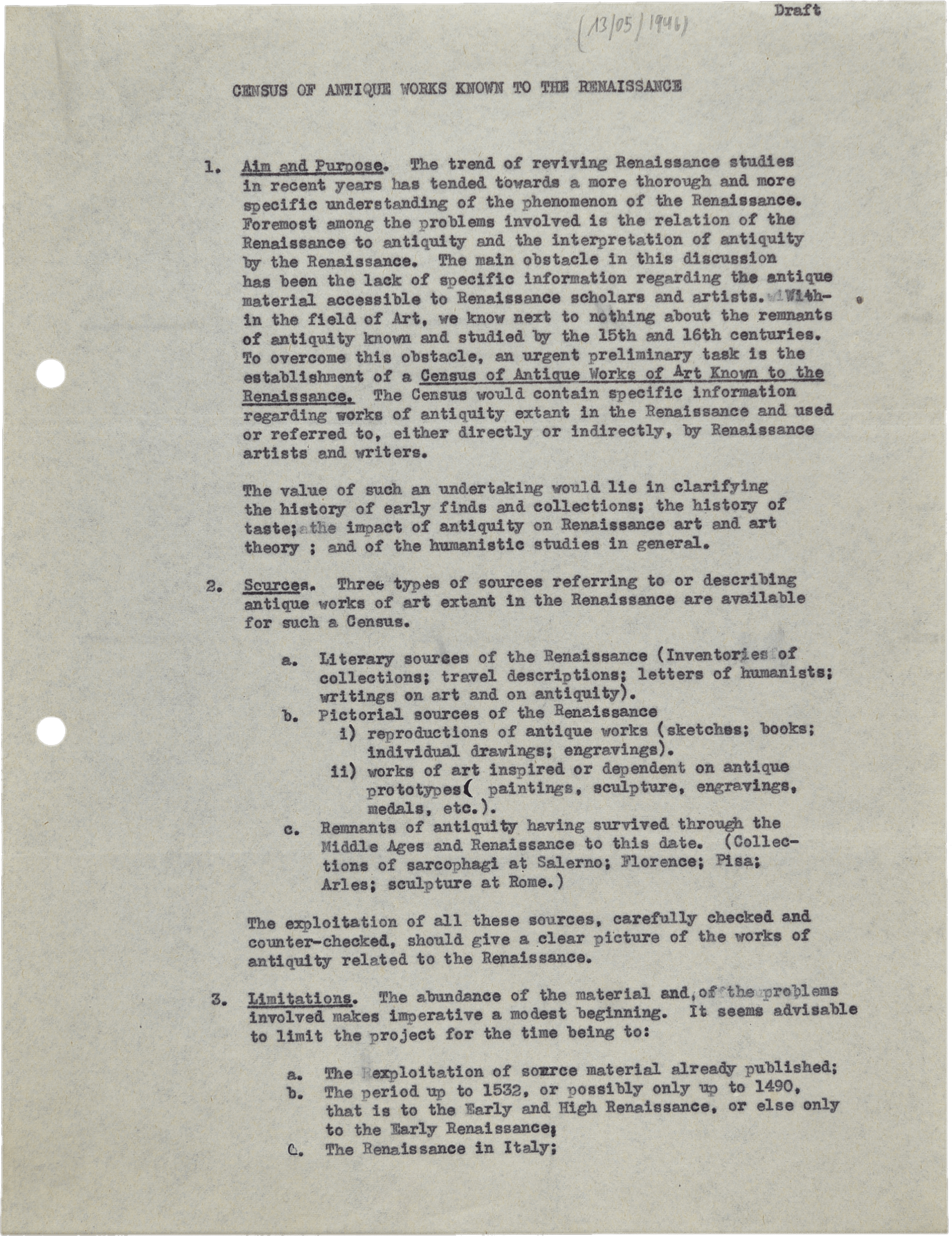
Warburg Institute Archive, GC, Richard Krautheimer an Fritz Saxl, 13 Mai, 1946, fol. 2
Draft
CENSUS OF ANTIQUE WORKS KNOWN TO THE RENAISSANCE
1. Aim and Purpose. The trend of reviving Renaissance studies in recent years has tended towards a more thorough and more specific understanding of the phenomenon of the Renaissance. Foremost among the problems involved is the relation of the Renaissance to antiquity and the interpretation of antiquity by the Renaissance. The main obstacle in this discussion been the lack of specific information regarding the antique material accessible to Renaissance scholars and artists. Within the field of Art, we know next to nothing about the remnants of antiquity known and studied by the 15th and 16th centuries. To overcome this obstacle, an urgent preliminary task is the establishment of a Census of Antique Works of Art Known to the Renaissance. The Census would contain specific information regarding works of antiquity extant in the Renaissance and used or referred to, either directly or indirectly, by Renaissance artists and writers.
The value of such an undertaking would lie in clarifying the history of early finds and collections; the history of taste; the impact of antiquity on Renaissance art and art theory; and of the humanistic studies in general.
2. Sources. Three types of sources referring to or describing antique works of art extant in the Renaissance are available for such a Census.
a. Literary sources of the Renaissance (Inventories of collections; travel descriptions: letters of humanists; writings on art and on antiquity).
b. Pictorial sources of the Renaissance
i) reproductions of antique works (sketches; books; individual drawings; engravings).
ii) works of art inspired or dependent on antique prototypes (paintings, sculpture, engravings, medals, etc.).
c. Remnants of antiquity having survived through the Middle Ages and Renaissance to this date. (Collections of sarcophagi at Salerno; Florence; Pisa; Arles; sculpture at Rome.)
The exploitation of all these sources, carefully checked and counter-checked, should give a clear picture of the works of antiquity related to the Renaissance.
3. Limitations. The abundance of the material and, of the problems involved makes imperative a modest beginning. It seems advisable to limit the project for the time being to:
a. The exploitation of source material already published;
b. The period up to 1532, or possibly only up to 1490, that is to the Early and High Renaissance, or else only to the Early Renaissance,
c. The Renaissance in Italy;